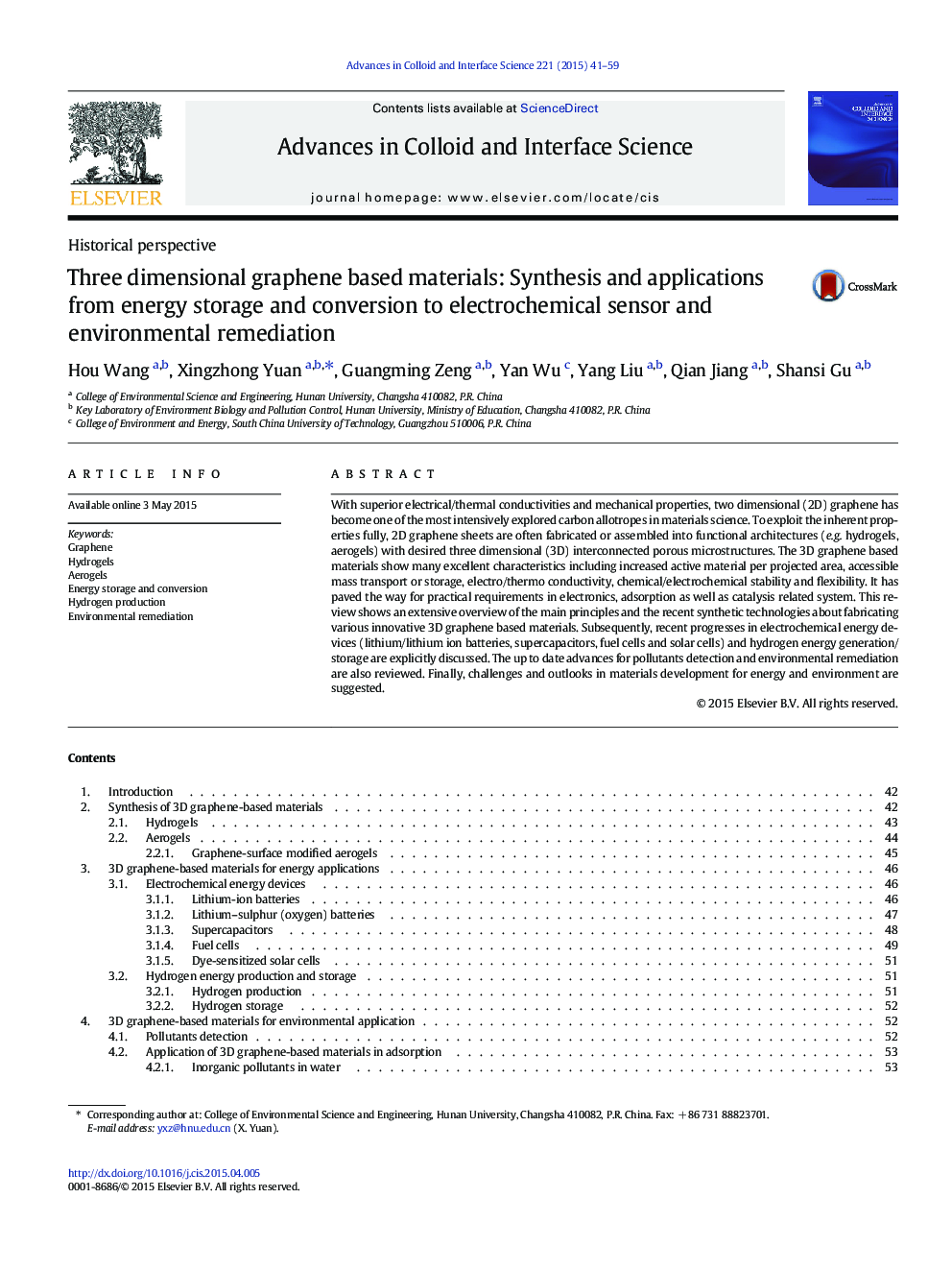| Article ID | Journal | Published Year | Pages | File Type |
|---|---|---|---|---|
| 590685 | Advances in Colloid and Interface Science | 2015 | 19 Pages |
•Recent studies on synthetic pathways of 3D graphene-based materials are reviewed.•Applications of 3D graphene-based materials are discussed and summarized.•Challenges and outlook about 3D graphene-based materials are presented.
With superior electrical/thermal conductivities and mechanical properties, two dimensional (2D) graphene has become one of the most intensively explored carbon allotropes in materials science. To exploit the inherent properties fully, 2D graphene sheets are often fabricated or assembled into functional architectures (e.g. hydrogels, aerogels) with desired three dimensional (3D) interconnected porous microstructures. The 3D graphene based materials show many excellent characteristics including increased active material per projected area, accessible mass transport or storage, electro/thermo conductivity, chemical/electrochemical stability and flexibility. It has paved the way for practical requirements in electronics, adsorption as well as catalysis related system. This review shows an extensive overview of the main principles and the recent synthetic technologies about fabricating various innovative 3D graphene based materials. Subsequently, recent progresses in electrochemical energy devices (lithium/lithium ion batteries, supercapacitors, fuel cells and solar cells) and hydrogen energy generation/storage are explicitly discussed. The up to date advances for pollutants detection and environmental remediation are also reviewed. Finally, challenges and outlooks in materials development for energy and environment are suggested.
Graphical abstractFigure optionsDownload full-size imageDownload as PowerPoint slide
